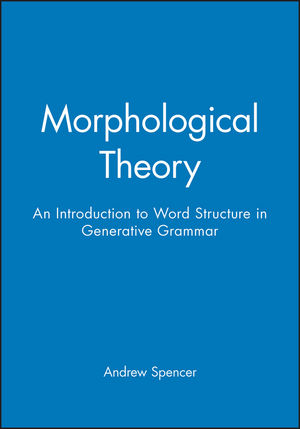|
Textbook
Morphological Theory: An Introduction to Word Structure in Generative GrammarISBN: 978-0-631-16144-8
Paperback
532 pages
August 1991, ©1991, Wiley-Blackwell
 This is a Print-on-Demand title. It will be printed specifically to fill your order. Please allow an additional 10-15 days delivery time. The book is not returnable.
|
||||||
The book opens with an account of the phenomena studied by morphologists, an outline of classical problems and an introduction to the earliest models of morphology proposed within the generative paradigm. Its second part deals with the interface between morphology and phonology and includes a detailed discussion of lexical Phonology, and related models, as well as a variety of types of nonconcatenative morphology.
Part III begins with a comprehensive introduction to more recent theories of word structure, including inflectional morphology. Subsequent chapters examine the interface between morphology and syntax, exploring the processes which affect grammatical relations, such as passives and causatives. Further chapters examine compounding processes and the morphology, phonology and syntax of clitic systems. The final part of the book includes a full discussion of "bracketing paradoxes" and closes with a survey of models of morphology and competing views of the place of morphology in linguistic theory.



